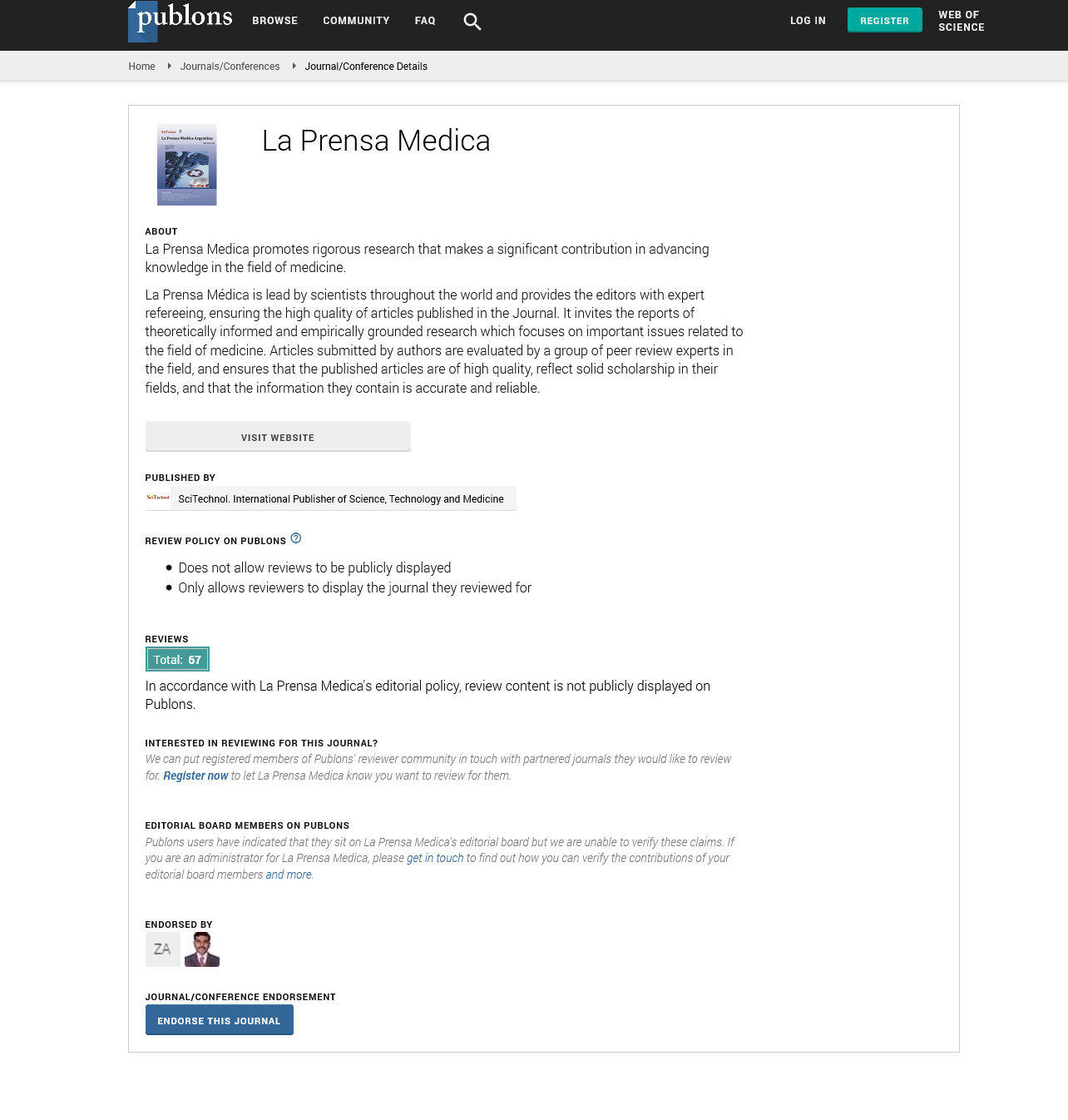Opinion Article, La Prensa Medica Vol: 109 Issue: 4
Genetic Origins and Clinical Insights into Cri-du-Chat Syndrome
Souza Mehdizadeh*
1Department of Neurology, Hazrat Rasool-e Akram Hospital, Iran University of Medical Sciences Tehran, Iran
*Corresponding Author: Souza Mehdizadeh,
Department of Neurology, Hazrat
Rasool-e Akram Hospital, Iran University of Medical Sciences Tehran, Iran
E-mail: meh.sah@iums.ac.ir
Received date: 30 October, 2023, Manuscript No. LPMA-23-111731;
Editor assigned date: 01 November, 2023, PreQC No. LPMA-23-111731 (PQ);
Reviewed date: 16 November, 2023, QC No. LPMA-23-111731;
Revised date: 23 November, 2023, Manuscript No. LPMA-23-111731 (R);
Published date: 30 November, 2023, DOI: 10.4172/2324-8955.1000677
Citation: Mehdizadeh S (2023) Genetic Origins and Clinical Insights into Cri-du-Chat Syndrome. La Prensa Medica 109:4.
Abstract
Within the complex world of human genetics lies a condition that draws both fascination and empathy-Cri-du-Chat syndrome. Named after the distinctive cry resembling a cat's mew that affected infants emit, this rare genetic disorder offers insights into the complexities of chromosomal anomalies and their impact on development.
Description
Within the complex world of human genetics lies a condition that draws both fascination and empathy-Cri-du-Chat syndrome. Named after the distinctive cry resembling a cat's mew that affected infants emit, this rare genetic disorder offers insights into the complexities of chromosomal anomalies and their impact on development. As we delve into the world of Cri-du-Chat syndrome, we uncover its genetic origins, clinical manifestations, and the support networks that strive to enhance the lives of those affected.
The genetic factor
Cri-du-Chat syndrome is a chromosomal disorder caused by a partial deletion of the short arm of chromosome 5. This genetic hiccup is typically not inherited, but rather occurs as a random event during the formation of reproductive cells or early foetal development. The loss of genetic material disrupts the delicate symphony of genetic instructions, leading to a cascade of developmental challenges.
The series of symptoms
The clinical manifestations of Cri-du-Chat syndrome are diverse, reflecting the myriad ways in which genetic anomalies can influence growth and development. Infants with the condition often present with a high-pitched, cat-like cry, attributed to abnormal vocal cord development. Facial features can include a small head (microcephaly), widely spaced eyes (hypertelorism), low-set ears, and a small jaw. Motor and cognitive development is also significantly impacted. Delayed milestones such as sitting, crawling, and walking may occur, and intellectual disabilities are common. The journey of those affected by Cri-du-Chat syndrome is marked by individual variations, making early intervention and personalized care pivotal in enhancing their quality of life.
Beyond the blueprint
The genetic blueprint of Cri-du-Chat syndrome paints a vivid picture of the challenges it presents, but it's the human aspect that brings depth to the narrative. Families and caregivers play a central role in navigating the unique needs of individuals with the condition. The journey is often characterized by resilience, determination, and an unwavering commitment to providing the best possible care and support.
Early intervention's vital role
Early intervention services form a cornerstone of care for individuals with Cri-du-Chat syndrome. Speech therapy, physical therapy, and occupational therapy can significantly improve motor skills, communication abilities, and overall independence. Tailored educational programs can empower individuals to reach their fullest potential, fostering a sense of achievement and belonging.
A web of support
In an era of connectivity, the support network for families and individuals affected by Cri-du-Chat syndrome has expanded. Online communities, advocacy organizations, and medical professionals contribute to a web of knowledge and understanding. These platforms provide a space for sharing experiences, seeking advice, and fostering a sense of community that alleviates the isolation often associated with rare disorders.
Challenges and triumphs
While living with Cri-du-Chat syndrome presents unique challenges, the journey is far from devoid of joy and triumph. Each milestone achieved, no matter how seemingly small, carries profound significance. The capacity for love, growth, and connection knows no boundaries, serving as a testament to the human spirit's resilience.
Redefining normalcy
The story of Cri-du-Chat syndrome offers a poignant reminder of the diversity of human experience. In a world that often emphasizes a conventional sense of "normal," individuals with genetic conditions like Cri-du-Chat syndrome redefine the boundaries of normalcy. Their stories challenge preconceptions, inspire empathy, and encourage society to embrace a broader, more inclusive definition of what it means to be human.
Conclusion
The journey of individuals with Cri-du-Chat syndrome is a testament to the boundless potential of human adaptation and the intricacies of our genetic makeup. As researchers continue to delve into the complexities of chromosomal anomalies, their discoveries contribute to a deeper understanding of human development and the intricate interplay between genetics and life's journey.
 Spanish
Spanish  Chinese
Chinese  Russian
Russian  German
German  French
French  Japanese
Japanese  Portuguese
Portuguese  Hindi
Hindi 

